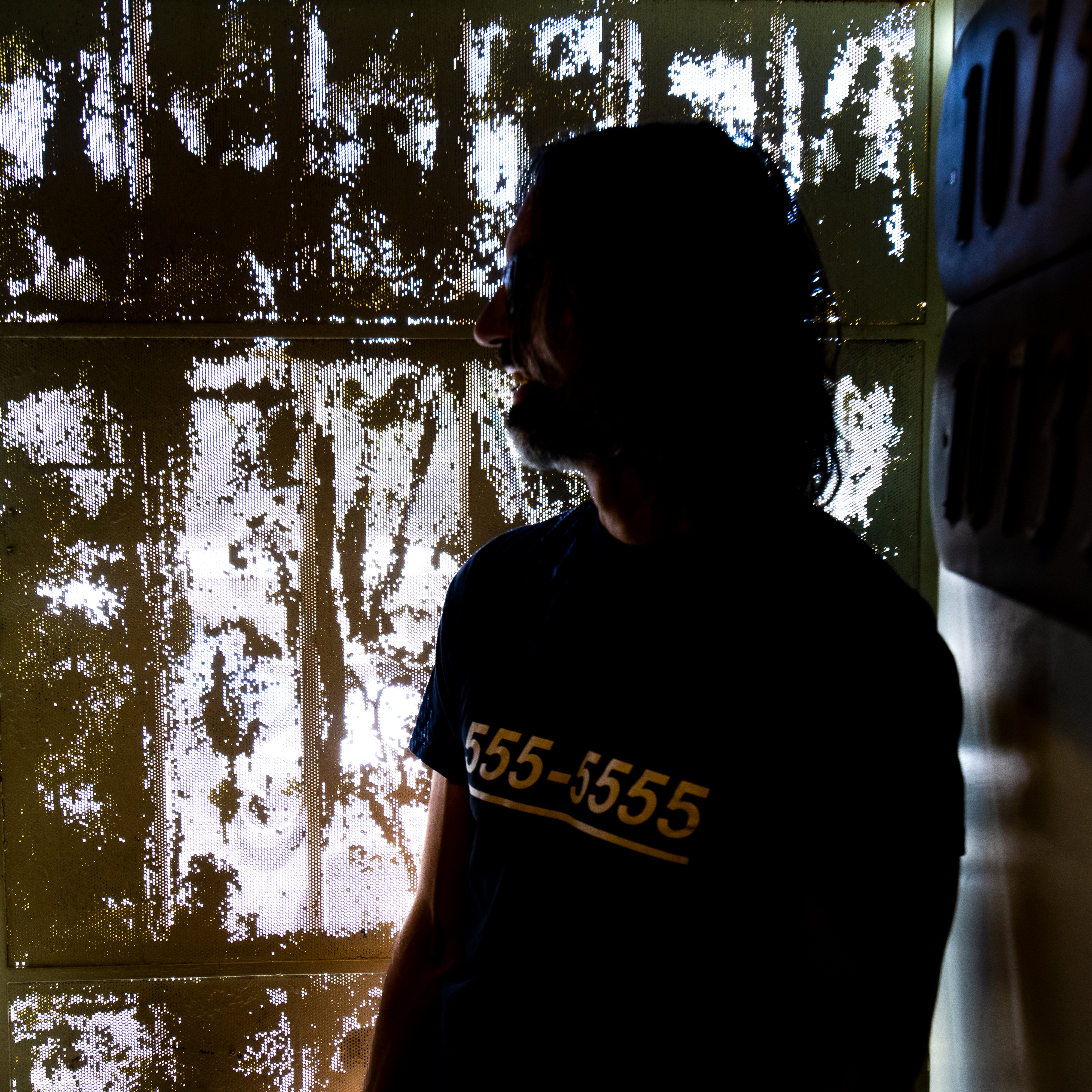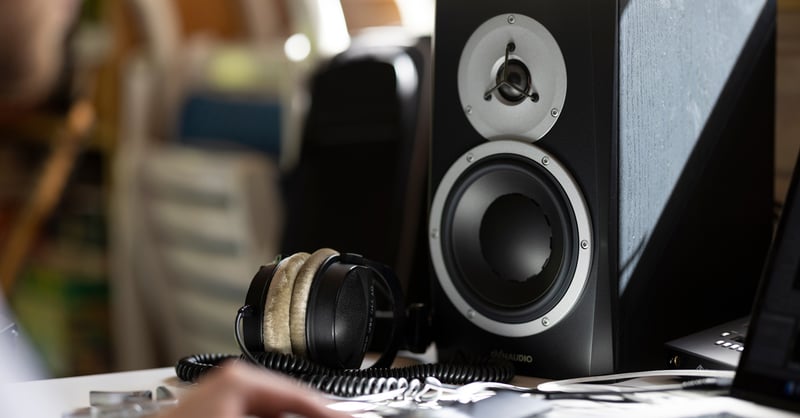Justin Stanley has been in the music business for decades – and his catalogue of collaborations is impressive, to say the least: Prince, Eric Clapton, Beck, Sheryl Crow, Celine Dion, Quincy Jones and many more. Credentials box: checked.
We’d headed into downtown Los Angeles to check out Justin’s Core 47/Core Sub-based 5.1-channel rig – but that almost turned out to be a detail as the day went on. He undeniably loves the sound he gets from the system (“It’s a sonic space that you can live in the whole day and be really pleasantly absorbed with”), but we really didn’t spend a lot of time talking about speaker calibration, cone materials or crossover frequencies.
It quickly became clear that, to Justin, gear – of whatever vintage or pedigree – is simply a collection of tools that facilitate the creative process. And when you sit with someone that passionate about the music above anything else, you just want to explore that path. So, we did – and in much more detail than we had ever been able to imagine.
A dark den of creative forces
Step out of the California sun into Justin’s studio/playground and it takes a couple of minutes for your eyes to adjust. Vintage lamps and fixtures provide the dimmed light, and the vibe is warm and welcoming. And the place is huge – much bigger than you’d think from its nondescript door on an anonymous street. Inside it’s like a maze, with each corner-turn revealing yet another studio, drum-room, vocal booth or control-room. They’re all densely packed with instruments and gear.
We’re left with no doubt that he’s living in the moment; when inspiration strikes, there should only be seconds between that first thought and hitting ‘Record’.
Justin says this is how he always works – regardless of whether the subject is a legendary artist with more Grammy awards than shoes, or the editor of a speaker-manufacturer magazine. Our Creative Director, John, eventually got roped in – in a very hands-on way – during an interview that developed into a live jam/studio session.

The Justin Stanley recipe
“I’m not a pre-production person,” Justin says in his mellow Aussie accent. “I listen to the songs, I look at arrangements, but beyond that it’s instinctual, where they’ll come in and we’ll go: ‘Let’s try this song, starting here,’ maybe the guitars or whatever. Just find the key, the vocal placement, and then I’ll just kind of feel it. And that can be reactive to the mood I’m in or they’re in, or what we’ve talked about. You have to be very vulnerable and able to share yourself with the people in the room.”
To illustrate that mindset, Justin shares a tale from a session he did with Celine Dion, Quincy Jones and a host of other well-known engineers: “She was singing a take, and then one of the guys went to stop her. ‘Why don’t you try going up there at the end?’ The next guy was, like: ‘Do you mind phrasing that a little bit differently?’. It happened three times. The fourth time, when they stop the tape, and before anyone can say anything, Quincy stands up and says: ‘Will you just let the woman bloody well sing?’ She did one more take and that was it. It was beautiful! Sometimes you’ve just got to shut up and let the artist do their thing.”
That’s the Justin Stanley Way, and that’s how he goes about it when he hands John a delicious 1970s Fender Stratocaster.

“It’s a sonic space that you can live in the whole day and be really pleasantly absorbed with”
Justin Stanley, on his Dynaudio Core system
‘Play something for me’
Our Creative Director is a quite capable heavy-rock guitarist, albeit with a Grammy-free mantelpiece back home. But that isn’t relevant to a producer with Justin’s approach, as he works on the premise that every artist brings something different into the studio. Whatever that might be, music will happen!
To get started, Justin programs a beat on a vintage step-sequencer, records it and loops it in Pro Tools. Then he adds a vintage tremolo device to the guitar signal and adjusts the effect to roughly the same tempo as the beat while John noodles around with different chord progressions. (He later told us this was not his usual style at all; the laid-back beat he was given forced some entirely different stuff out of his fingers.) Along the way, Justin apparently hits the record button, and all of a sudden has a guitar part that he quickly edits and loops along with the beat in Pro Tools.
At no point did he try to guide John in any particular direction, suggesting alternative chords, different playing styles or settings on the guitar. He was just in the room being part of the process, choosing the section he wanted to use on his own terms. After all, he is the producer…

Gibsons and Moogs and tablas and…
Justin started out as a drummer, but as a child he never said: “All I want to do is play the drums”. He said: “All I want to do is to make music.” Notice the difference?
Today, Justin plays a wide variety of instruments. While he might not be a virtuoso on all of them, he’s very much capable of expressing himself – and, thanks to his fundamental musicality, he manages to play just what is needed from a pure musical perspective. It’s all about being present in the room and finding meaningful ways to serve the musical process.
Back to the track. Justin lays down a groove on the bass – he goes with the second take and quickly edits it to fit the Pro Tools arrangement. The next step is some subtle Indian percussion, as he hands John a tabla and points an SM57 in his direction. Again, no guidance; just encouraging the artist to play something and see where it goes.
Next up, Justin leaves the room to record some real drums, which he nails almost immediately, and they just sit organically in the music right away – sound-wise and groove-wise. Now, the track has an extra layer that makes it crave yet another round of electric guitar. Justin decides that John needs a Gibson SG with some gain to give it a shot of pure rock. And finally, he fires up a lovely old Moog synth, which pulls in a different direction yet blends in very nicely.

Virtuous vibes and rolling tapes
The track ends up being a relaxed, stoner-ish, behind-the-beat groove with some added rock spice. It remains nameless, and it will neither be released nor earn our editor his first Grammy. It wasn’t even mixed. It was just a fun jam in the studio – but with a great musician and producer, who has an alternative and highly inspirational approach. As experiences go, it was a real eye-opener.
Justin’s a master at reading vibe and adding bits and pieces (using whatever instrument) that make arrangements shine. Perhaps that’s the real magic: making artists relax in his presence and ultimately be so comfortable that they deliver stellar performances when the tape is rolling.
Speaking of tape, that was one of the few gear-related bits Justin talked about during our visit: “I love tape, but it’s such a debate. It blurs the lines a bit, which I love. It also gives you time to think between takes. You can only fit three songs on a reel – and then when you’re rewinding you’ve got this moment where you’re contemplating what to do next. Just the sound of that tape; it’s soothing. Digital doesn’t allow that. Anything goes, which is the upside, but you have to create that space to reflect – make a cup of tea or whatever.”
(Justin makes a great cup of tea.)
That particular point taps right into Justin’s overall approach to music, producing and recording: be present here and now and reflect on what’s happening. What happens next could be anything, but if you keep an open mind (and open ears), it could be something great.
“Who knew he had it in him?”, Justin says, finally, of the impromptu performance. “That’s great. That’s awesome.”
We came with an ambition to talk about speakers, converters, preamps, microphones, plug-ins, equalizers, compressors and whatnot, but we got something else.
We got to spend an afternoon in a genuine musical playground.
Additional words: John Steward
Pictures: Henrik Kastenskov
Sign up to get more great articles
Nothing compares to the satisfaction of knowing – for a fact – that something is as good as it gets







